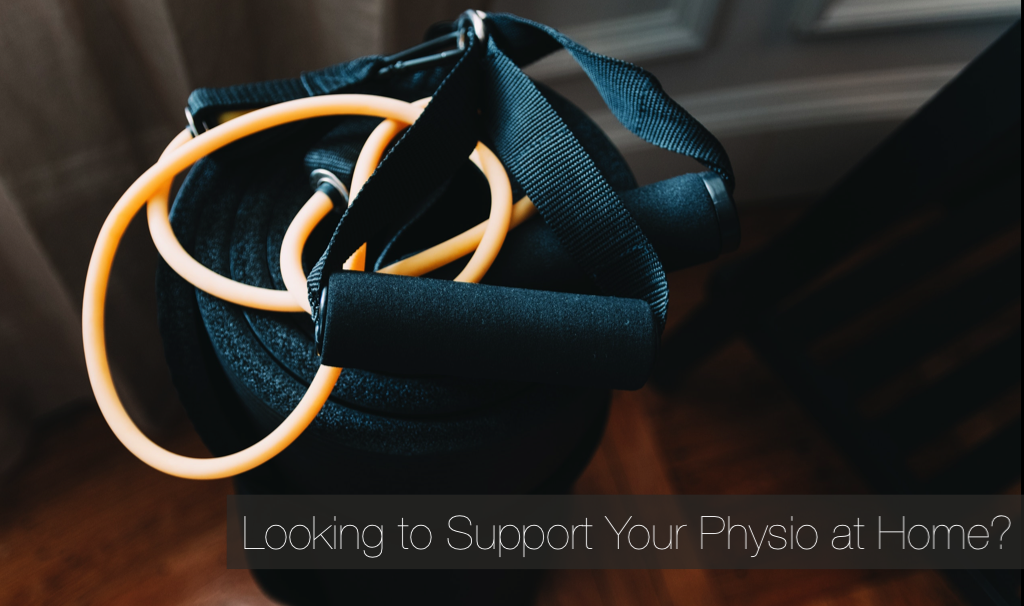
While we provide our patients with undivided one-on-one attention at our clinic, we love it when they express interest in taking home all they have learned so that they can work on their rehabilitation, recovery, and injury prevention program from the comforts of their home, yard, or nearby park. That being said, self-care in this capacity must be done with care, and preferably following our explicit instructions. When doing so, outfitting your home with the right equipment makes perfect sense. Now we’re certainly not suggesting that you go out and invest in an lymphedema compression device, ultrasound therapy machine, or your own physical therapy treatment table. Instead, there are many practical, inexpensive, and extremely helpful “tools” you can pick up for home-use to complement your in-clinic work.
Practical Physical Therapy and Fitness Gear / Equipment You Can Buy for Use in Your Own Home
1. Stability Ball
Exercise/stability balls are one of the most common items found within the walls of a physiotherapy clinic for good reason. They are very effective in improving your balance and core stability, and can be used in the recovery of a wide variety of physical ailments. Studies show that stability ball work (in proper form as prescribed by your physiotherapist) can also improve flexibility, muscle strength, spine alignment and has even proven effective in treating conditions such as ankylosing spondylitis (a type of arthritis that affects the spine). Stability balls are also quite inexpensive, making them a perfect addition to your home physiotherapy “starter kit”.
2. Balance Trainer (Half Ball)
Studies show that exercise (with proper form) on an unstable surface is effective in improving muscle strength, power and balance in adolescents, young adults and older adults alike. Data also shows that the same sort of unstable surface training can assist in injury rehabilitation and muscle recuperation. When done right, the regime can provide healthy stress on a susceptible joint. Compared to traditional stable resistance training (RT) exercises, the less dramatic changes or even increases in trunk and limb muscle activation found with instability resistance training (IRT) can provide greater stabilizing functions to protect recovering muscles and can promote motor control adaptations that are especially important with lower back pain conditions. To date, physical therapists are applying IRT as a progressive component in rehabilitation training programs that may start with balance training alone (no resistance load), progressing to balance challenges with instability resistance (IRT) to traditional ground based resistance training (RT) with greater loads and intensities.
One piece of equipment that assists in instability training, be it with body weight or a greater load, is the half-ball balance trainer. Like the exercise ball, this is an inexpensive and easy to store item that will serve you well at home.
3. Exercise Tubes and Bands
This is a broad category that includes a few very affordable additions to your home kit. Isokinetic (relating to the force that a muscle applies during a limb movement at constant velocity) bands and exercise tunes are a great tool for helping physiotherapy patients build strength or recover from any injury that may have caused a loss of muscle mass and growth. They can be used to rehabilitate muscle strains, sprains, and tears and allow you to increase your strength and range of motion so that you can return to normal function. They are also very effective in injury prevention when used in activity/sport warm-up and cool-down sessions.
4. Foam Roller
Foam rollers are no longer considered a fad, but a mainstay in every at-home physical therapy and fitness kit. When used properly and often, foam rollers can assist in self-myofascial release (or self-massage) in addition to increasing blood flow and provide for a greater range of motion while decreasing the risk of injury and reducing recovery time.
5. Stationary Exercise Bike
This is the most significant investment on this list, but if it’s in your budget you won’t regret the purchase, as long as you use it, that is. A stationary bike station is found in every physiotherapy clinic which is a clear sign that it’s a highly effective tool for your use at home too. It’s an invaluable piece of equipment that will assist in your recovery from foot, leg, and ankle injuries while helping build strength and stamina throughout your legs. It also provides a great form of cardiovascular exercise, and serves as a fantastic warmup method for those heading out for a run or other strenuous activity.
6. K-Tape /KT Tape / Athletic Tape
Kinesiology tape, which is commonly referred to as k-tape, kt-tape, or simply athletic tape, is an elastic strip that typically uses an acrylic adhesive to stick to a part of your body and is used with the intent of treating pain and impediment from sports injuries and a variety of other physical disorders. Physiotherapists commonly apply k-tape to treat arthritis, back pain, knee pain, ligament sprains, muscle strains, runner’s knee, patella femoral pain syndrome, shin splints, shoulder pain, tennis elbow, and much more (even headaches).
Your physiotherapist will show you how to apply k-tape to your impacted area, so that you can repeat the process at home before partaking in a sport or physical activity. K-tape has become somewhat of an athletic fashion statement as of late, so be sure to consult with your physical therapist about which brands to buy because there are a lot of copycat/faux versions out there that do not provide the same level of support.
Some of the items above may be available (contingent upon supply) at our physiotherapy clinic in Burnaby. Schedule a consultation today so that we can help you better understand how to use them properly as a part of your complete rehabilitation, recovery, and injury prevention plan.
